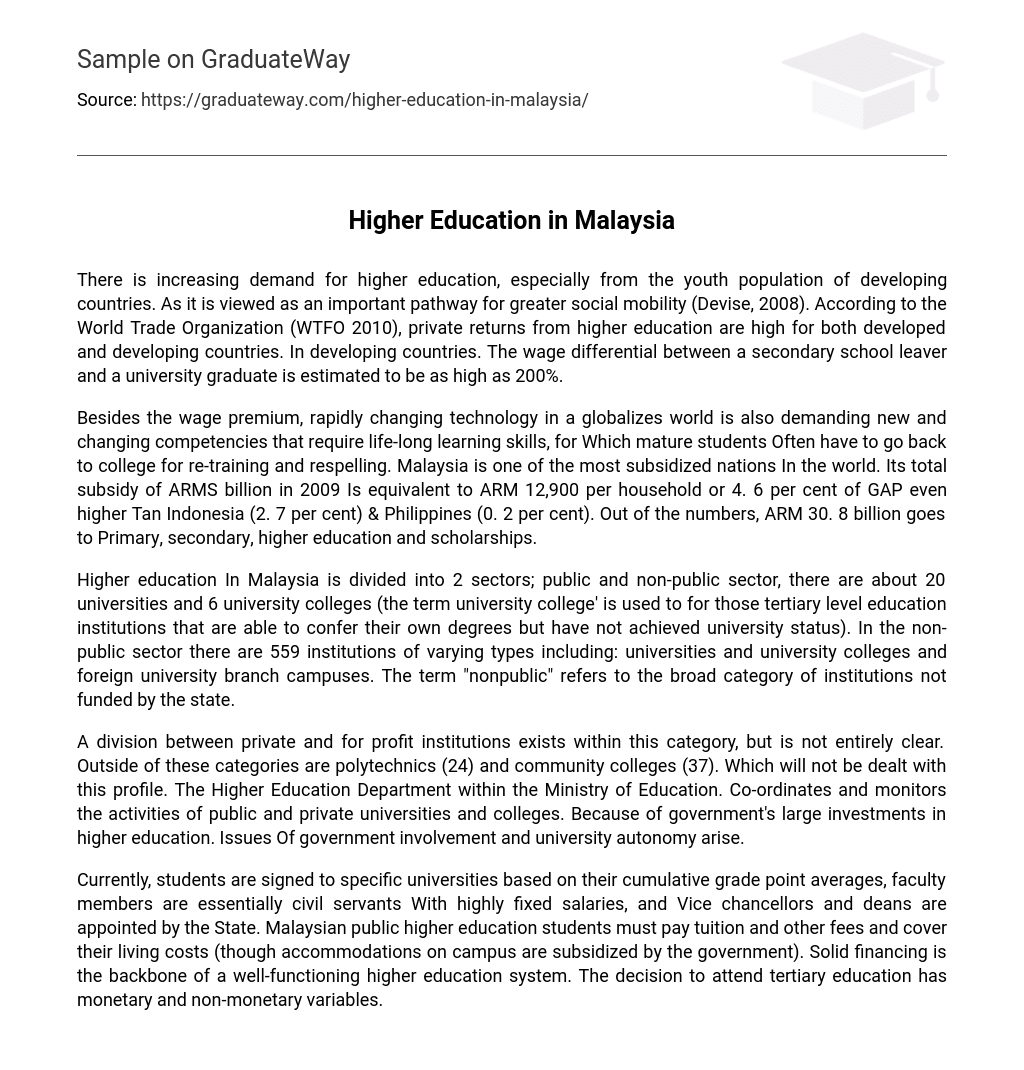There is increasing demand for higher education, especially from the youth population of developing countries. As it is viewed as an important pathway for greater social mobility (Devise, 2008). According to the World Trade Organization (WTFO 2010), private returns from higher education are high for both developed and developing countries. In developing countries. The wage differential between a secondary school leaver and a university graduate is estimated to be as high as 200%.
Besides the wage premium, rapidly changing technology in a globalizes world is also demanding new and changing competencies that require life-long learning skills, for Which mature students Often have to go back to college for re-training and respelling. Malaysia is one of the most subsidized nations In the world. Its total subsidy of ARMS billion in 2009 Is equivalent to ARM 12,900 per household or 4. 6 per cent of GAP even higher Tan Indonesia (2. 7 per cent) & Philippines (0. 2 per cent). Out of the numbers, ARM 30. 8 billion goes to Primary, secondary, higher education and scholarships.
Higher education In Malaysia is divided into 2 sectors; public and non-public sector, there are about 20 universities and 6 university colleges (the term university college’ is used to for those tertiary level education institutions that are able to confer their own degrees but have not achieved university status). In the non-public sector there are 559 institutions of varying types including: universities and university colleges and foreign university branch campuses. The term “nonpublic” refers to the broad category of institutions not funded by the state.
A division between private and for profit institutions exists within this category, but is not entirely clear. Outside of these categories are polytechnics (24) and community colleges (37). Which will not be dealt with this profile. The Higher Education Department within the Ministry of Education. Co-ordinates and monitors the activities of public and private universities and colleges. Because of government’s large investments in higher education. Issues Of government involvement and university autonomy arise.
Currently, students are signed to specific universities based on their cumulative grade point averages, faculty members are essentially civil servants With highly fixed salaries, and Vice chancellors and deans are appointed by the State. Malaysian public higher education students must pay tuition and other fees and cover their living costs (though accommodations on campus are subsidized by the government). Solid financing is the backbone of a well-functioning higher education system. The decision to attend tertiary education has monetary and non-monetary variables.





